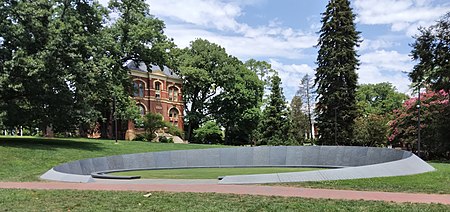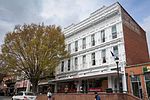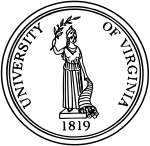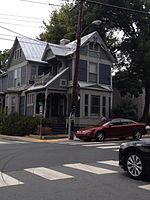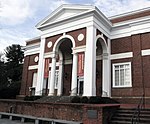The University of Virginia (UVA) is a public research university in Charlottesville, Virginia, United States. It was founded in 1819 by Thomas Jefferson and contains his Academical Village, a UNESCO World Heritage Site. The original governing Board of Visitors included three U.S. presidents: Jefferson, James Madison, and James Monroe, the latter as sitting president of the United States at the time of its foundation. As its first two rectors, Presidents Jefferson and Madison played key roles in the university's foundation, with Jefferson designing both the original courses of study and the university's architecture. Located within its historic 1,135 acre central campus, the university is composed of eight undergraduate and three professional schools: the School of Law, the Darden School of Business, and the School of Medicine.The University of Virginia's scholars have played a major role in the development of many academic disciplines, including economics, law, literary art, visual art, and the sciences. The university is referred to as a "Public Ivy" for offering an academic experience similar to that of an Ivy League university. Admission to the university is highly selective, with a 16.2 percent acceptance rate for the Class of 2027, and the university is known in part for its historic foundations, student-run honor code, and secret societies.In research, the university has been a member of the Association of American Universities for 120 years, and the journal Science credited its faculty with two of the top ten global scientific breakthroughs in a single year. In sports, the university athletic teams are called the Cavaliers and lead the Atlantic Coast Conference in team NCAA Championships for men's sports, also ranking second in women's and overall titles. In 2015, and again in 2019, the University of Virginia was presented with the Capital One Cup for fielding the nation's best overall athletics programs for men's sports.The university's alumni, faculty, and researchers have included several U.S. presidents, heads of state, Nobel laureates, Pulitzer Prize winners, Rhodes Scholars, Marshall Scholars, and Fulbright Scholars. Some 30 different governors of U.S. states have attended the university, as have numerous U.S. senators and members of Congress. UVA has produced 56 Rhodes Scholars, eighth most in the United States, while its alumni have founded companies such as Reddit, CNET, VMware, and Space Adventures.
